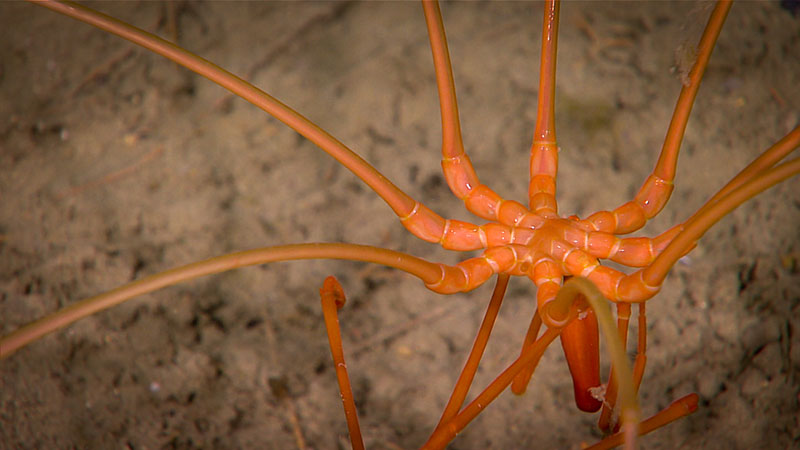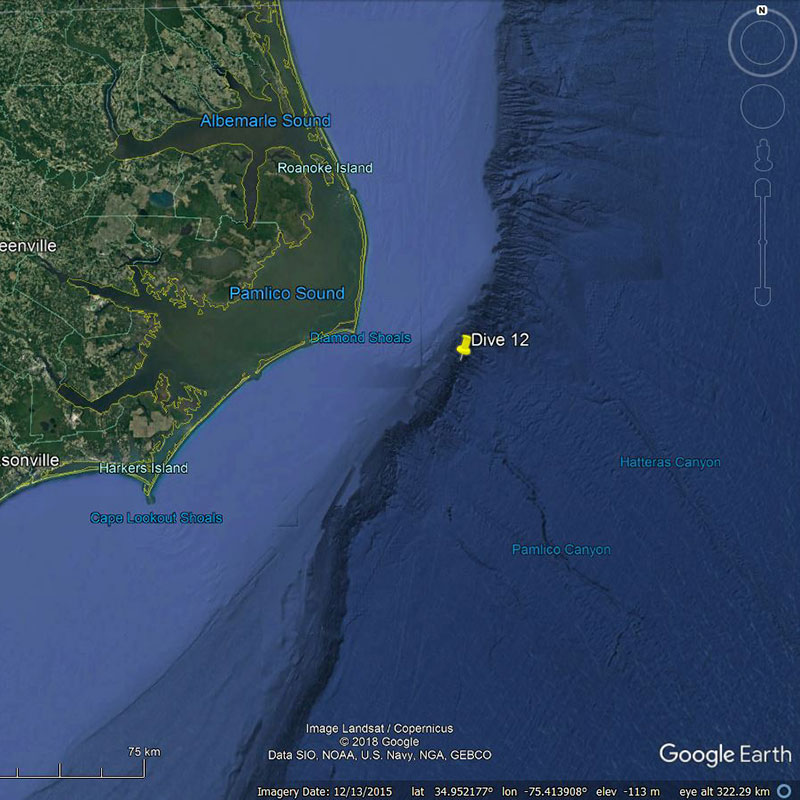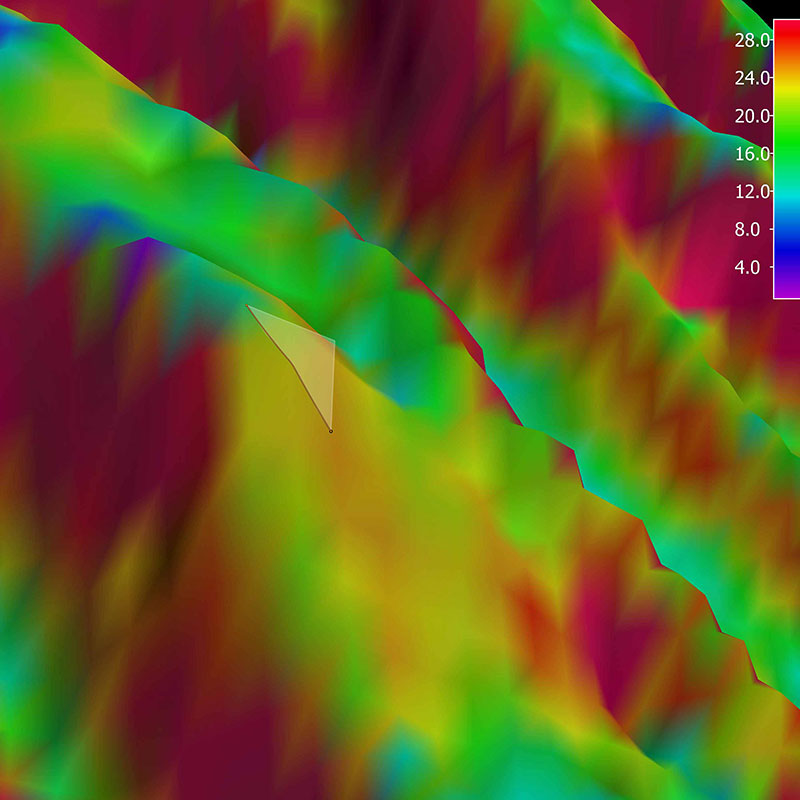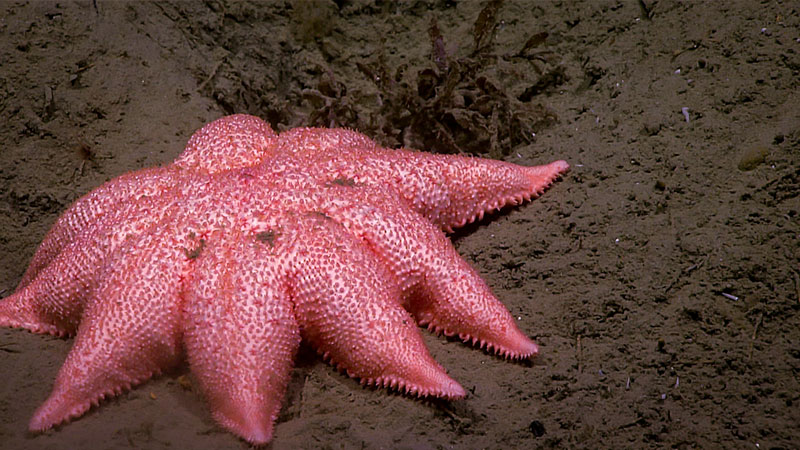When NOAA Ship Okeanos Explorer arrived on site at Pamlico Canyon today, the wind and current conditions were too rough for a safe launch of the remotely operated vehicle (ROV) Deep Discoverer. The team decided to head back inshore towards the shallower canyons area to try to find divable conditions. The new site was chosen along an intercanyon ridge offshore North Carolina. This area is characterized by a series of elongated ridges with continental slope origins between larger, major canyons.

This large pycnogonid or sea spider was imaged at 1,122 meters (about 3,681 feet) depth during Dive 12 of the Windows to the Deep 2018 expedition. Sea spiders are more closely related to spiders on land than the arthropods of the deep. They use their proboscis to suck up fluids of an organism they are eating. You can view that behavior is this highlight video. Image courtesy of the NOAA Office of Ocean Exploration and Research, Windows to the Deep 2018. Download larger version (jpg, 858 KB).
ROV Deep Discoverer surveyed a steep portion of these ridges from 18:00:54 - 21:55:22 UTC. This dive began at about 1,255 meters (4,117 feet) depth, with the ROV traversing up a section of the ridge and ending the dive at a depth of around 1,116 meters (3,661 feet). The first half of the dive had the steepest slope, around 28 degrees, with the later half of the dive only having around a nine-degree slope. Some of the fauna observed during the dive included sea stars including one species that is able to burrow itself into the mud using pointed tube feet, hermit crabs with zoanthids on their backs, tube anemones, garden eels, stony corals, octocorals, cup corals, tripod fish, pycnogonids (sea spiders), eelpout, cnidarians, brittle stars, lobed ctenophores, squid, and sea pens including an unidentified species that was collected for further analysis.
Loading the player...
This squid, imaged during exploration of an intercanyon ridge offshore North Carolina, can be seen changing color. Cephalopods, including squid, octopods, and cuttlefishes, are some of the few animals in the world so adept at changing color. They do so using color-changing cells called chromatophores. Movement of muscles surrounding these elastic pigment sacks causes them to expand (revealing more color) or retract (less color). Cephalopods use color changing to communicate, with potential mates or possibly to warn predators, or to camouflage and disguise themselves.
Video courtesy of the NOAA Office of Ocean Exploration and Research, Windows to the Deep 2018. Download larger version (mp4, 30.3 MB).
A bobtail was seen for the second time during this expedition. This bobtail was observed changing color while swimming. Like many others in their class of organisms, these cephalopods can use their chromatophores, or pigment-containing cells, to alter their appearance to communicate with others of their species or to camouflage themselves. Learn more about the bobtails here. During the dive, ROV Deep Discoverer videoed a couple of potential proboscis, or tongues, of spoon worms extended out of their burrows; a couple of times these proboscis were disturbed and they contracted back into their burrows. An interesting fact is that the proboscis can be much longer than the actual worm. The scientists also observed a rare gastropod making trails along the seafloor. Review the dive summary for a more detailed look at the fauna observed and the samples collected.
Throughout the dive, the co-science leads also interacted live with various groups onshore through telepresence. They were able to answer questions from the Weather Channel and the International Maritime University of Panama about the current Windows to the Deep 2018 expedition. With the dive and live interactions complete, NOAA Ship Okeanos Explorer is headed to the next dive location for tomorrow, a sonar anomaly dubbed “Big Dipper,” a site that might be a shipwreck. Stay tuned tomorrow as we discover what this sonar anomaly is – be it an archaeology site, a geological formation, or otherwise!



